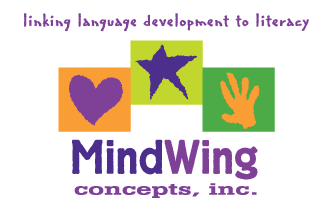Secure Checkout. FREE SHIPPING for Continental U.S. Orders over $60.
Menu
-
- Home
-
About Us
-
The Approach
-
Linking Language & Literacy
-
Professional Learning
-
Learning Resources
-
SHOP
-
Blog
-
- About MindWing
- Our People
- Contact Us
- Your Account
- Login
-
United States (USD $)

Secure Checkout. FREE SHIPPING for Continental U.S. Orders over $60.
Tool Tuesday: Make a Photo into a Story!
by Sean Sweeney October 06, 2025 3 min read
I have written in the past here about the value of using your own personal narratives in support sessions. McCabe and Rollins (1994) perfectly describe the value of model stories in their article on eliciting narratives:
“In spontaneous interactions, you have to tell a story to get a story. Almost everyone has experienced awkward silences in social situations. No one can think of a thing to say. However, the minute one person launches into a tale about locking keys in his or her car or leaving lights on in a parking lot, virtually all others in the group share a similar incident that happened to them.”
This goes for kids, too, as they are often quite able at any age to shy away from situations that are “cringe!”
Presenting a story to our students, in addition to the likelihood of receiving a story in return, can also be a great way of discussing self-regulation strategies such as Zones of Regulation® or scaffolding problem-solving. After all, problem-solving is a narrative process! In all of the above approaches, visual supports can aid in processing and responding to model narratives, which is where our photos come in handy. We must remind ourselves that the camera we have with us all the time can serve to capture narrative information.
Sometimes, however, we miss the shot. The other day I had a hilarious occurrence where a bird found its way into our living room while I was alone at home. I discovered this quite suddenly as I walked into the room and let out a loud, unmanly shriek. From the other end of the house, I realized that this problem was unlikely to solve itself, so I regulated myself, went in there and opened a window, whereupon it luckily flew right out.
I thought this would make a great story in therapy groups later that day, but figured a visual would certainly help. I wondered, “Can AI enhance a photo so I can tell this story?” It can.
 I have had pretty good luck lately with Google Gemini for image creation, so thought I would start there. First, however, I needed a base photo, so I positioned my camera standing up, and in selfie mode. Cameras have timers, but I used my Apple Watch’s Camera Remote feature to get a posed photo. From Gemini, it is easy to start a chat—hit the plus + button and upload a photo.
I have had pretty good luck lately with Google Gemini for image creation, so thought I would start there. First, however, I needed a base photo, so I positioned my camera standing up, and in selfie mode. Cameras have timers, but I used my Apple Watch’s Camera Remote feature to get a posed photo. From Gemini, it is easy to start a chat—hit the plus + button and upload a photo.
I did this with my Just OK But Good Enough photo and began with this prompt:

 I had to offer a few additional prompts to try to get the bird to face me (failure) and settled on asking Gemini to move it closer, ending up with the again Good Enough photo at right:
I had to offer a few additional prompts to try to get the bird to face me (failure) and settled on asking Gemini to move it closer, ending up with the again Good Enough photo at right:
Now, to place this in Story Grammar Marker® context, Google Slides and the MindWing digital icons did the trick.
My boys’ group had been working together to construct a treehouse in Minecraft EDU, so I thought I’d make the figurative connection that my house is like a treehouse, as we live on the 3rd floor (photo is a screenshot from Google Earth because I forgot to snap one before leaving home). This generated a lot of conversation from the get-go:

Shapes in Google are typable, and you can provide any type of text scaffolding to set up the activity, or just type as the kids talk! They love that. In this activity, I was surprised to note the scaffolding needed to help students draw conclusions as to why we would want the bird to exit safely (Plan), as opposed to swatting it, and the likely success of opening a window. So, a good problem-solving activity in their “zone!”


I hope you will check out Google Gemini’s image generation and modification features. Remember, you can also just make (picture) stories up!
Sean Sweeney
Sean Sweeney, MS, MEd, CCC-SLP, is a speech-language pathologist and technology specialist working in private practice at the Ely Center in Needham, MA, and as a clinical supervisor at Boston University. He consults with local and national organizations on technology integration in speech and language interventions. His blog, SpeechTechie (www.speechtechie.com), looks at technology “through a language lens.” Contact him at sean@speechtechie.com.
Leave a comment.
Comments will be approved before showing up.
